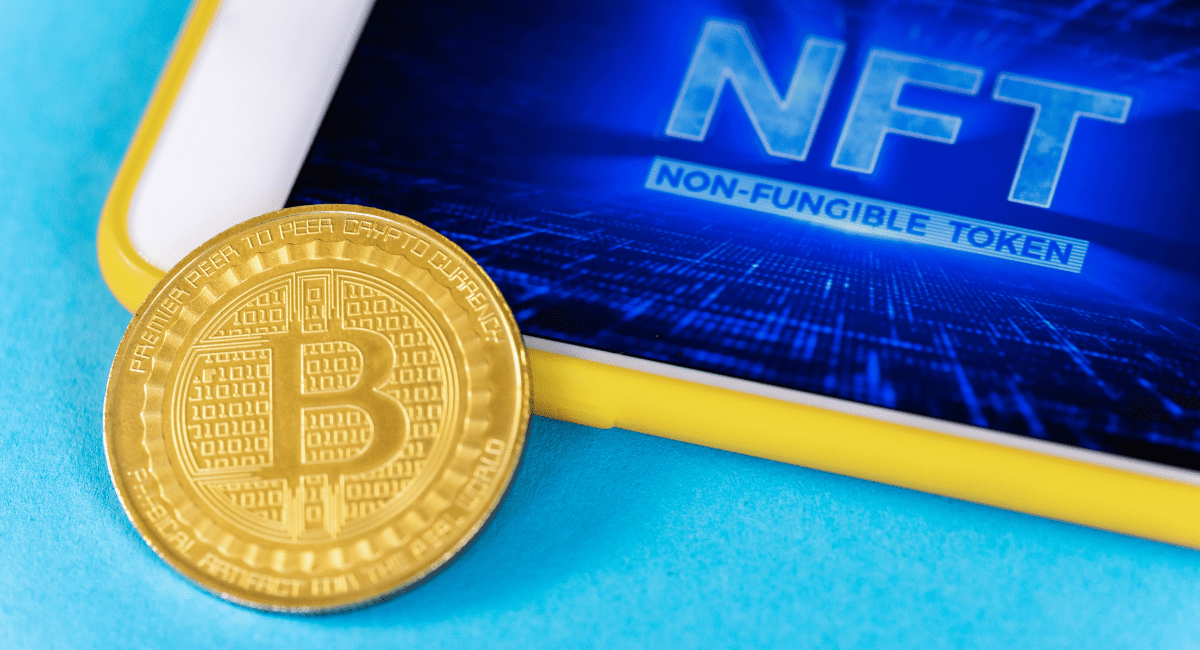What Is The NFT Market Size For Fashion Brands, Does It Have A Future?

In the ever-evolving landscape of digital assets and blockchain technology, Non-Fungible Tokens (NFTs) have emerged as a transformative force, reshaping industries and creating new opportunities for content creators, artists, and now, fashion brands. As the fashion industry undergoes a paradigm shift towards the digital realm, the NFT market size for fashion brands becomes a compelling and dynamic topic to explore.
The Rise of NFTs in the Fashion Space

NFTs and Digital Ownership in Fashion:
Fashion brands, known for their creativity and innovation, are increasingly recognizing the potential of NFTs as a means to establish digital ownership and authenticity. NFTs represent unique, indivisible tokens on the blockchain, making them an ideal vehicle for certifying the authenticity of digital or physical fashion assets. From virtual fashion items to limited edition physical pieces, NFTs enable fashion brands to bridge the gap between the physical and digital realms.
Digital Fashion and Wearable NFTs:
The concept of digital fashion has gained traction, with designers creating exclusive, entirely digital clothing items that users can showcase in virtual environments or social media. These digital fashion pieces are often accompanied by NFTs, granting buyers ownership and authenticity. Additionally, wearable NFTs are emerging, allowing users to display their digital fashion acquisitions in the metaverse or through augmented reality applications.
Also, read – How To Enter The Booming NFT Market With A Launch Strategy
Assessing the Market Size In NFT landscape

Current Market Dynamics:
As of the latest available data, the NFT market size for fashion brands is experiencing substantial growth. Fashion houses, independent designers, and artists are entering the NFT space, contributing to an expanding ecosystem of digital fashion assets. The market is characterized by a diverse range of offerings, including virtual fashion shows, limited edition digital wearables, and collaborations between fashion brands and NFT platforms.
Partnerships and Collaborations:
Major fashion brands are forging partnerships with prominent NFT platforms and marketplaces, driving further adoption within the industry. These collaborations not only elevate the profile of NFTs in the fashion space but also provide established brands with direct access to a new audience of digital collectors and enthusiasts. Such partnerships often involve the launch of exclusive NFT collections or virtual experiences that seamlessly integrate with the brand’s aesthetic and ethos.
Everyone is talking about how the market is slowing down but I’m working in Paris right now and the luxury fashion sector and game studios seem to be in web3 fifth gear.
— BETTY (@betty_nft) June 2, 2023
Factors Influencing NFT Market Growth in Fashion

The growth of the Non-Fungible Token (NFT) market in the fashion industry is influenced by a complex interplay of factors that span technological, consumer behavior, and industry-specific considerations. As fashion brands increasingly explore the potential of NFTs, understanding these influential factors is crucial for anticipating trends, navigating challenges, and capitalizing on opportunities within this dynamic space.
1. Digital Transformation in Fashion:
- Background: The fashion industry is undergoing a profound digital transformation, accelerated by shifts in consumer behavior and advancements in technology.
- Influence on NFTs: The industry’s digital evolution provides a fertile ground for NFT adoption. Fashion brands are embracing digital channels for marketing, sales, and brand experiences, creating a natural synergy with NFTs. As digital becomes integral to the fashion experience, NFTs offer a novel way for brands to extend their presence in the digital realm, engage tech-savvy consumers, and explore innovative avenues for monetization.
2. Consumer Demand for Digital Exclusivity:
- Background: Consumers, particularly the younger demographic, are seeking digital exclusivity and unique online experiences.
- Influence on NFTs: NFTs fulfill the consumer desire for exclusive digital assets. Whether it’s virtual fashion items, iconic fashion moments in NFT form, or limited edition digital wearables, NFTs cater to a growing demand for unique online possessions. Owning a rare and exclusive piece in the digital realm resonates with consumers seeking novel ways to express their identity and differentiate themselves in the online space.
3. Blockchain’s Role in Authentication:
- Background: The fashion industry grapples with challenges related to authenticity and provenance.
- Influence on NFTs: Blockchain technology, the underlying infrastructure for NFTs, addresses these challenges by offering a secure and transparent way to verify the origin and ownership history of digital or physical assets. NFTs, authenticated through blockchain, provide a robust solution for certifying the authenticity of fashion assets, combating issues such as counterfeiting, and instilling trust among consumers.
4. Artistic and Creative Expression:
- Background: The fashion industry is synonymous with creativity, and brands are constantly seeking new ways to express their artistic vision.
- Influence on NFTs: NFTs offer a unique canvas for artistic expression within the digital space. Fashion brands can collaborate with digital artists to create exclusive digital wearables, virtual fashion shows, or limited edition NFT collections. This intersection of fashion and digital art not only enhances brand creativity but also attracts a global audience of digital art and fashion enthusiasts.
5. Evolving Consumer Values:
- Background: Consumer values are evolving, with a heightened emphasis on sustainability, uniqueness, and meaningful experiences.
- Influence on NFTs: NFTs align with evolving consumer values by offering a sustainable and unique form of digital ownership. Sustainable practices in blockchain networks, coupled with the uniqueness of NFTs, resonate with consumers who prioritize eco-conscious choices and value authenticity. Brands adopting NFTs can align their initiatives with these changing consumer values, creating a more resonant connection with their audience.
6. Partnerships and Collaborations:
- Background: Collaboration is a prevalent trend in the fashion industry, fostering creativity and expanding brand reach.
- Influence on NFTs: Fashion brands are forming strategic partnerships with NFT platforms and marketplaces. These collaborations not only elevate the profile of NFTs in the fashion space but also provide brands with direct access to a new audience of digital collectors and enthusiasts. By launching exclusive NFT collections or virtual experiences, brands can leverage collaborations to enhance their digital presence and tap into the thriving NFT ecosystem.
7. Digital Ownership and Identity:
- Background: The concept of digital ownership is gaining prominence, with users seeking to establish a digital identity.
- Influence on NFTs: NFTs enable users to establish digital ownership of unique assets, contributing to the formation of a digital identity. Whether it’s owning a piece of virtual fashion or showcasing iconic moments from fashion history as NFTs, users can curate a digital identity that reflects their tastes and interests. This shift towards digital ownership aligns with the broader trend of users seeking meaningful and personalized experiences in the digital space.
8. Tech-Savvy Consumer Base:
- Background: The target demographic for many fashion brands consists of tech-savvy individuals who are early adopters of new technologies.
- Influence on NFTs: The tech-savvy nature of the fashion consumer base positions them as early adopters of NFTs. These consumers are more likely to engage with and appreciate the digital ownership and exclusivity offered by NFTs. Fashion brands can leverage this predisposition by incorporating NFTs into their digital strategy, creating tailored experiences that resonate with their tech-savvy audience.
Challenges and Opportunities

. Environmental Concerns:
- Challenge: The environmental impact of certain blockchain networks, particularly those using Proof-of-Work consensus mechanisms, has raised significant concerns.
- Implications: Fashion brands entering the NFT space may face backlash or scrutiny related to the carbon footprint associated with NFT transactions. This challenge necessitates a thoughtful approach to choosing blockchain solutions that prioritize sustainability, such as those utilizing Proof-of-Stake or eco-friendly consensus mechanisms.
2. Educational Barriers:
- Challenge: Many consumers may lack awareness and understanding of NFTs, digital ownership, and the value proposition they offer.
- Implications: Fashion brands and NFT platforms must invest in educational initiatives to bridge the knowledge gap. Clear and accessible communication is crucial to convey the benefits of NFTs, such as authenticity, exclusivity, and the novel experiences they enable. Educational campaigns can enhance consumer confidence and foster broader adoption.
3. Legal and Intellectual Property Considerations:
- Challenge: Navigating the legal landscape of NFTs in the fashion industry involves considerations related to intellectual property rights, licensing agreements, and potential disputes.
- Implications: Fashion brands need to carefully structure NFT releases to align with existing legal frameworks. This includes securing the necessary rights for digital assets, addressing licensing agreements, and ensuring that both creators and consumers are protected in the evolving landscape of digital ownership.
4. Market Saturation and Quality Control:
- Challenge: The proliferation of NFTs in the market may lead to saturation, making it challenging for individual fashion brands to stand out.
- Implications: Maintaining quality and uniqueness becomes paramount. Fashion brands must carefully curate and release NFT collections, ensuring that each offering aligns with the brand’s identity and values. Quality control measures are essential to avoid dilution of the brand in a crowded NFT marketplace.
5. Integration with Physical Fashion:
- Challenge: Bridging the gap between digital and physical fashion poses challenges in terms of tokenizing physical assets and maintaining the connection between the two realms.
- Implications: Fashion brands looking to tokenize physical items as NFTs need to establish clear processes for linking digital ownership with corresponding physical goods. This challenge also raises questions about the transferability of ownership between the digital and physical domains.
Opportunities:
1. Sustainable Blockchain Solutions:
- Opportunity: The growing awareness of environmental concerns presents an opportunity for fashion brands to adopt sustainable blockchain solutions.
- Advantages: Brands can align themselves with eco-friendly blockchain networks, mitigating the environmental impact of NFT transactions. This not only addresses a significant challenge but also positions the brand as socially responsible and environmentally conscious.
2. Immersive Educational Campaigns:
- Opportunity: Brands can seize the opportunity to create immersive educational campaigns about NFTs and digital ownership.
- Advantages: Well-crafted educational campaigns enhance consumer understanding, dispel misconceptions, and foster trust. Brands can leverage various media channels, including social media, to engage audiences with informative content, tutorials, and behind-the-scenes insights into the creation of NFT collections.
3. Blockchain-Enhanced Transparency:
- Opportunity: Blockchain’s role in authentication offers an opportunity to enhance transparency in the fashion supply chain.
- Advantages: By integrating blockchain technology beyond NFTs, fashion brands can provide consumers with verifiable information about the production process, materials used, and the journey of a fashion item from creation to sale. This transparency aligns with consumer preferences for ethically sourced and sustainable fashion.
4. Collaborations and Limited Edition Drops:
- Opportunity: Collaborations between fashion brands and NFT platforms present opportunities for unique and limited edition drops.
- Advantages: Limited edition NFT releases create a sense of exclusivity and urgency, driving demand. Collaborations with digital artists, celebrities, or influencers can elevate the brand’s profile within the NFT community and attract a broader audience.
5. Virtual Fashion and Digital Wearables:
- Opportunity: The rise of digital fashion and wearables in the NFT space opens new avenues for creativity and brand expression.
- Advantages: Fashion brands can explore the creation of entirely digital clothing items or virtual accessories that users can showcase in virtual environments or on social media. This not only aligns with consumer interest in digital exclusivity but also allows brands to experiment with innovative, boundary-pushing designs.
6. Blockchain-Integrated Loyalty Programs:
- Opportunity: Integrating blockchain into loyalty programs can enhance customer engagement and reward NFT ownership.
- Advantages: Brands can incentivize NFT ownership by offering exclusive rewards, discounts, or access to special events through blockchain-based loyalty programs. This strategy fosters customer loyalty, encourages continued engagement with the brand, and enhances the overall value proposition of owning fashion NFTs.
In conclusion, the challenges and opportunities for NFT market growth in the fashion industry are intertwined, requiring a strategic and nuanced approach from fashion brands. By addressing environmental concerns, educating consumers, navigating legal complexities, and embracing innovative opportunities, fashion brands can position themselves at the forefront of the evolving NFT landscape, creating meaningful connections with their audience and unlocking new dimensions of digital and physical fashion experiences.
Future Trajectory and Conclusion
The NFT market size for fashion brands is poised for continued growth, driven by technological advancements, shifting consumer preferences, and the industry’s embrace of digital transformation. As fashion houses, designers, and artists explore the boundless creative possibilities offered by NFTs, the market is likely to witness an influx of unique digital assets, collaborations, and immersive experiences.
The future trajectory of the NFT market in fashion holds promise for further innovation, with potential developments including augmented reality try-ons, blockchain-integrated supply chain transparency, and enhanced virtual fashion events. The intersection of fashion and blockchain technology is not just a trend but a transformative force shaping the future of digital ownership and creative expression.
In conclusion, the NFT market size for fashion brands represents a compelling and evolving narrative within the broader digital asset landscape. As the fashion industry continues to push the boundaries of creativity, NFTs provide a unique canvas for expression, authenticity, and engagement in the digital age. The coming years are likely to witness the continued fusion of fashion and blockchain, unlocking new dimensions of digital ownership and immersive experiences for enthusiasts and creators alike.




























































